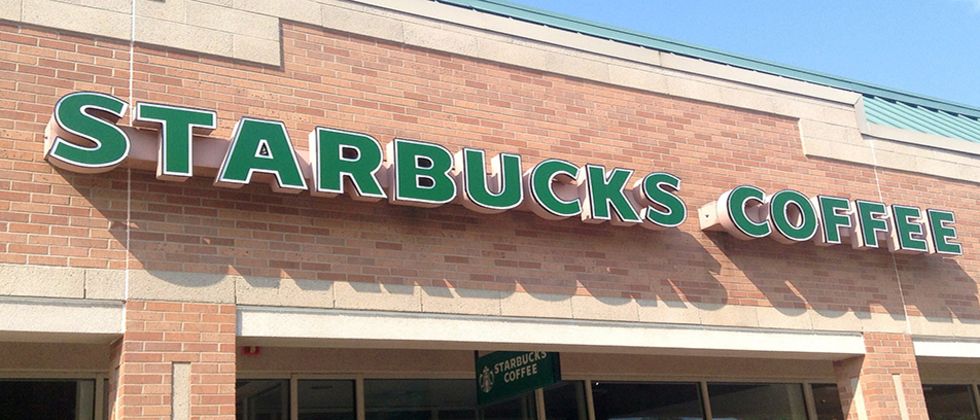California Management Review
California Management Review is a premier professional management journal for practitioners published at UC Berkeley Haas School of Business.
by Robert Springer

Starbucks is a company at the proverbial crossroads. The beverage giant’s reputation has been battered in the last couple of years, with its ill-conceived “Race Together” and the recent unwarranted arrest of two black men at a Philadelphia store being two recent public miscues. The company’s YouGov Brand Index rating, a measure of how consumers feel about a brand, is at its lowest in at least 10 years. Howard Schultz, the company’s patriarch and longtime CEO, recently left the company. Business leaders and Starbucks customers are wondering how it will follow up on its recent nationwide store closing for implicit bias training.
Yet Starbucks plans to open more than 12,000 new stores worldwide by 2021. Its YouGov rating aside, other evidence paints Starbucks as a much admired company: Fortune ranked it as the fifth most admired company in the word and Esthisphere named it one of the world’s most ethical companies. And the company and CEO Kevin Johnson received generally good marks from the business sector for its swift and contrite reaction to the Philadelphia store incident.
Following up on the implicit bias training will not be easy. Implicit bias isn’t an innate human trait, but something learned very early in life. A National Institutes of Health funded study showed that while newborns showed no preference for faces of any race, three-month-old “infants demonstrated a significant preference for faces from their own-ethnic group.” This is the deep level of pervasiveness that a company must combat if it wishes to reduce implicit bias in its workplace.
Despite the recent missteps, Starbucks has tried to live up to its strong social responsibility pledge: “We have always believed Starbucks can – and should – have a positive impact on the communities we serve. One person, one cup, and one neighborhood at a time.” From ethically sourcing coffee beans to producing a greener coffee cup, the company is already ahead of the curve compared to the competition. Impressive as its current social responsibility initiatives are, the company’s recent stumbles with race prove that beans and cups are not the only corporate social responsibility initiative that demands its attention.
An overwhelming number (88 percent) of Millennials, “say that their job is more fulfilling when they are provided opportunities to make a positive impact on social and environmental issues,” say authors Philip Mirvis and Bradley Googins in a recent California Management Review article, “Engaging Employees as Social Innovators.” Starbucks, with its Millennial-aged workforce (average age: 25), would seem to be uniquely primed to take advantage of the group’s tendency toward social activism.
Perhaps one way Starbucks could actively engage its workforce would be following up on its half-day racial bias training with a program that gives its public-facing employees an opportunity to “crowdsource” ideas to combat implicit bias. Expanding on the training by creating an electronic suggestion box to garner employee ideas on how to reduce implicit bias is one way the company could source for feedback from within.
Providing an electronic suggestion box is a time tested way to get front line employees to engage and contribute meaningful ideas. “These inputs are vetted, rated, and enhanced by technical experts in the business and bundled into innovations,” Mirvis and Googins say. They add that “intrapreneurial employees were ‘on fire’ given the opportunity to participate in contests and labs to fashion their social innovations.” In addition to the societal benefits of reducing implicit bias, having more engaged employees could provide a monetary benefit to Starbucks as well in the form of lower turnover, a chronic problem at fast food restaurants.
It’s a non-trivial matter to institute Corporate Social Intrapreneurial (CSI) campaigns at companies as large as Starbucks, which has more than 7,500 U.S. stores, 157,000 U.S. employees, and millions of daily interactions with a demanding clientele. Customer-facing employees will need some guidance to even begin to submit useful ideas, let alone incubate and then implement them. As Mirvis and Googins note, “…no one does CSI as a ‘solo act’—intrapreneurs need support throughout a business to back and fund their ideas, to help them maneuver around resistance, and to move good ideas into production.”
While the company has a rich history of corporate social responsibility, it’s not clear how many of its initiatives involve cultivating and nurturing employee intrapreneurial ideas. Partnering with an outside firm with expertise in increasing employee engagement for social causes may prove beneficial.
It’s easy to mock Starbucks’ “Race Together” campaign, but how many companies are even trying to engage its employees on this sensitive yet vital issue? Creating a CSI campaign for frontline employees would be a risky venture for Starbucks, yet the company has shown an eagerness to tackle complex problems head on. What matters now is can they follow through? Engaging employees around sensitive and vital matters like racial bias is an entirely different matter than making their supply chain more green and sustainable. A half-day of bias training is a start, but it’s going to take a lot more work from corporate to create open lines of communication and feedback to help ensure their employees feel like their contribution has a chance of being heard.
Moving forward, Starbucks may find that the ideas generated by a CSI program not only engages employees but increases its profits as well. Howard Schultz famously sought to make Starbucks a “third place” between work and home where friends could gather. Incidents such as the Philadelphia arrest represent a clear threat to that goal. Engaging employees to help reduce implicit bias could go a long way to making a Starbucks store the third place that Schultz envisioned.